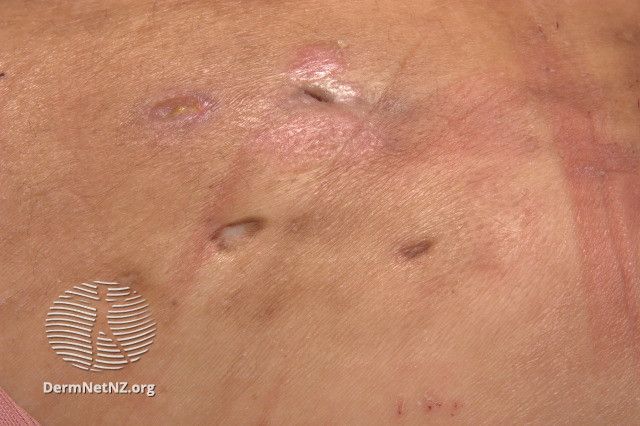Merging adalimumab with surgery produced more clinical effectiveness and improved quality of life after 12 months in patients who had moderate to severe hidradenitis suppurativa (HS) compared with adalimumab alone, according to results published in the Journal of the American Academy of Dermatology.1
Adalimumab is the only biologic approved for HS, but it displays a clinical response rate of up to 60%, leaving many in need of other treatment options like surgery.
The aim of this study was to compare the clinical effectiveness of adalimumab combined with surgery vs adalimumab alone in patients with moderate to severe HS. Pain associated with HS, pruritus, malodor, and suppuration are known to seriously decrease patients’ quality of life.
Key Takeaways
- Combining adalimumab with surgery led to greater clinical effectiveness and improved quality of life after 12 months in patients with moderate to severe hidradenitis suppurativa (HS) compared to using adalimumab alone.
- The study showed that surgery in conjunction with adalimumab resulted in a significant reduction in the International Hidradenitis Suppurativa Severity Score System (IHS4) and improved Dermatology Life Quality Index compared to adalimumab monotherapy. This combined treatment approach was particularly effective in addressing draining tunnels, a common issue in HS patients, and may offer better outcomes for those with this condition.
A pragmatic randomized controlled trial was undertaken from August 2018 to July 2022 at Erasmus University Medical Center in Rotterdam, the Netherlands. The primary outcome measured was the difference in mean International Hidradenitis Suppurativa Severity Score System (IHS4) decrease after 12 months of treatment, with the difference in mean Dermatology Life Quality Index decrease as a main secondary outcome. Outcomes were also compared with those found in the previous PIONEER studies that contained data on draining tunnels.
First, a total of 31 patients were included per arm of the study. The mean (SD) IHS4 score at baseline was 23.9 (10.7) in the surgery group and 20.9 (16.4) in the monotherapy group. Following 12 months of treatment, the surgery group showed a significantly greater reduction in IHS4 score compared with the monotherapy group (–19.1 [11.3] vs –7.8 [11.8]; P < .001). Additionally, the surgery group displayed a higher reduction in Dermatology Life Quality Index following treatment compared with the monotherapy group, with a mean (SD) reduction of 8.2 (6.2) vs 4 (7.7) (P = .02).
The monotherapy group had a high proportion of inflammatory lesions that persevered after 3 months of treatment, backing the need for additional surgery.
“In our study, the benefit of additional surgery was striking, with significant reductions in IHS4 score as well as patient’s quality of life,” continued the researchers.
Patients had a fairly low abscess and inflammatory nodule count, but often presented with multiple draining tunnels at baseline, with over 95% of patients having at least 1 draining tunnel. Compared with the PIONEER studies, where the prevalence of draining tunnels ranged from 62% to 75%, this is high.
“The PIONEER studies also showed that, despite its beneficial effects in suppressing recurrent nodules and abscesses, adalimumab does not have the therapeutic potential to induce full remission of draining tunnels,” said the researchers.
Additionally, the researchers argued that full remission should be sought because residual skin inflammation might stimulate systemic inflammation and can trigger the development of new lesions. Highly inflammatory tunnels are removed during surgery, decreasing the overall inflammatory load and augmenting adalimumab’s effectiveness and thus increasing the chance for a patient to reach remission.
Recurrences can still happen after surgery, and the study presented a recurrence rate of 10%, consistent with other literature.
One limitation of this study was that study follow-up was too short to evaluate surgical recurrence rates. Also, a “relatively high” rate of patients discontinued the study before 12 months, said the authors.
“The therapeutic option of adalimumab with surgery should always be proposed to patients with moderate to severe HS,” concluded the researchers.
Reference
- Aarts P, van Huijstee JC, van der Zee HH, van Doorn MBA, van Straalen KR, Prens EP. Adalimumab in conjunction with surgery compared with adalimumab monotherapy for hidradenitis suppurativa: a randomized controlled trial in a real-world setting. J Am Acad Dermatol. 2023;89(4):677-684. doi:10.1016/j.jaad.2023.04.034
[This article was originally published by our sister publication, AJMC.]











